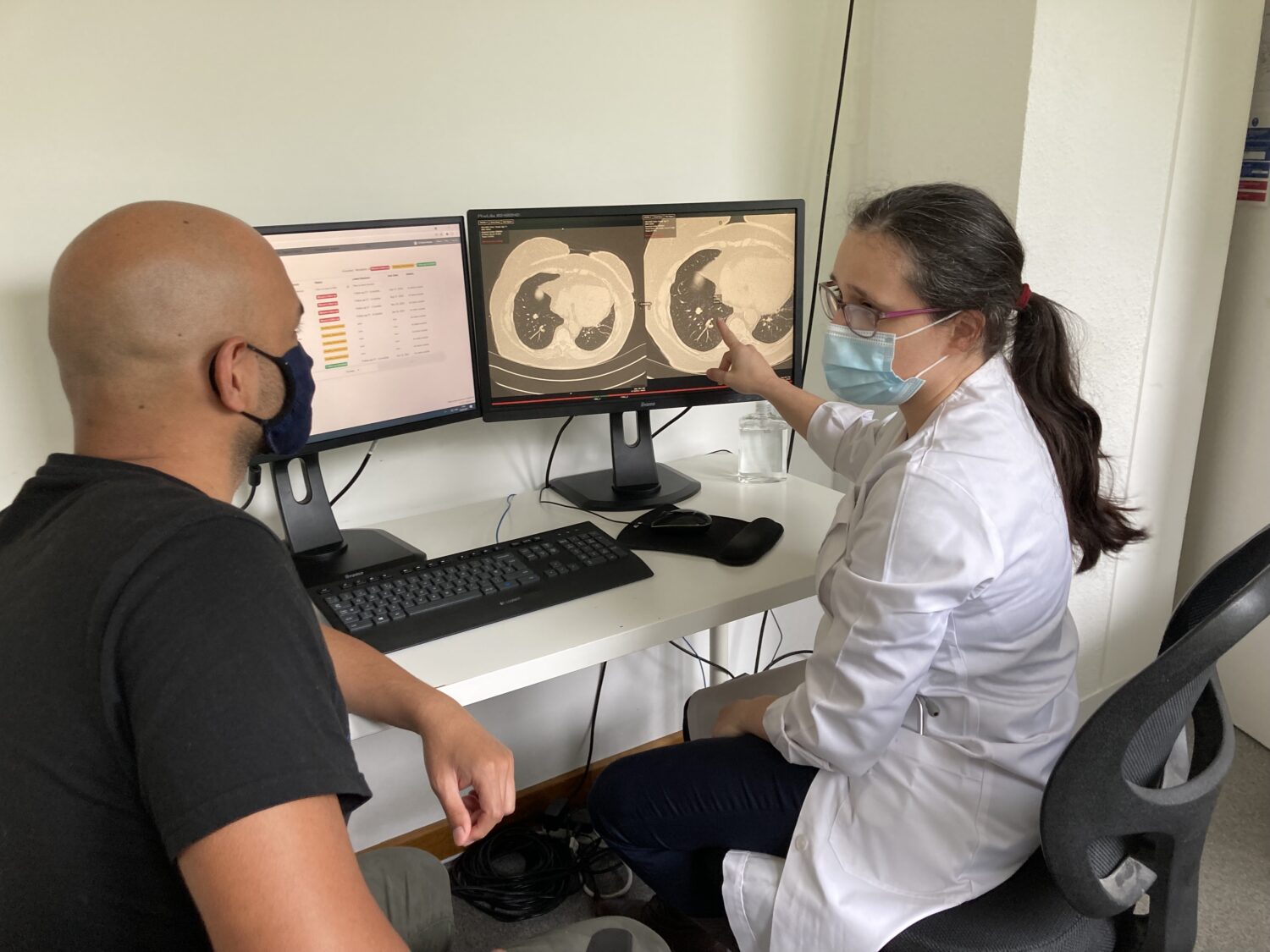
Lung cancer is the leading cause of cancer deaths worldwide, with approximately 1.8 million people dying from this disease each year. Most patients are diagnosed after symptoms have appeared and the disease has progressed to an advanced stage (Stage III or IV), which explains the current worldwide five-year survival rate of just 20 percent. In contrast, the survival rate for small lung tumors that are treated at Stage 1A is as high as 90 percent. This significant difference highlights a critical need for the diagnosis and treatment of lung cancer at the earliest possible stage.
One of the best opportunities to diagnose more small, pre-symptomatic lung cancers earlier is presented by the two million patients in the United States every year who have a lung nodule identified incidentally during chest CT scans ordered for other reasons, such as during an ER visit or after a cardiac event.
Current care guidelines mandate follow-up over one to two years to determine whether a nodule is cancerous. However, more than 60 percent of these patients do not receive guideline-recommended follow-up, severely limiting opportunities for early intervention and treatment. Patients who do receive recommended follow-up often require multiple imaging scans and biopsies, and sometimes unnecessary invasive procedures such as surgical biopsies and lung resections, before arriving at a definite diagnosis.
Several factors contribute to this situation:
1. Broken care workflows. As noted earlier, a patient may receive a chest CT scan for any number of reasons unrelated to a lung issue. During their review of the scan, the radiologist notes that there is a lung nodule present and recommends follow-up by the patient’s primary care physician (PCP). However, at that moment, this is a secondary and non-urgent issue for this patient, so therefore the care team may not alert the appropriate care team for nodule management. Also possible: the PCP assesses the radiology report as non-critical and does not inform the patient. It’s important to note that there are Standard of Care and legal liability issues associated with both scenarios.
2. Incidental screening diagnoses may not receive the attention they merit. Regionally, doctors may be aware that a significant percentage of the local population has completely benign lung nodules. And it’s true: 95 percent of these modules will stay benign. So, when the patient’s PCP is informed of an incidental diagnosis, they can be hesitant to prescribe a care path that involves a course of six-month CT scans—which are expensive and may unnecessarily alarm the patient.
3. The high cost of chasing down a definitive diagnosis. It is widely accepted that nearly one-third of all CT scans that include part of the lungs describe an incidentally detected lung nodule. Managing these nodule patients can present enormous resource challenges in scheduling appropriate follow-up care. The larger the healthcare network, the greater the challenge.
4. Low ROI. Implementing a workflow without automation to properly manage incidental lung nodule alerts is costly and has a low ROI. Most hospitals are therefore reluctant to implement a program to diligently review path lab notes of all scans. Clinical teams are already very busy, so allocating resources to track benign nodules with conventional manual processes that require additional full-time employees is a low priority.
Scale up: the cost-benefit equation is changing
Recent advances in artificial intelligence (AI) are changing the calculus of these decisions. For example, an AI-powered platform applies natural-language processing (NLP) automation to instantly read and grade any radiology report, and then identify and track patients who should be assigned special care. Additionally, the system assigns a Lung Cancer Prediction score to the nodules of interest, which stratifies patients and assists with an accurate diagnosis. This, in turn, supports better clinical decision-making.
The potent combination of NLP and AI-assisted diagnostic tools represents a viable solution for many healthcare systems, enabling the treatment of more early-stage lung cancers without increasing the workload of clinical teams. And, by arriving at the right diagnosis sooner, hospitals can also minimize unnecessary invasive biopsies.
Is AI-assisted lung cancer diagnosis right for your hospital?
Given the importance of early diagnosis, hospitals should implement a plan for tracking and managing incidental lung nodules—to avoid reputational risk and save the lives of more patients. As you assess your course of action, your clinical teams should ask these questions:
1. Last year, how many nodules were identified incidentally at your healthcare system?
2. Were they all tracked and what procedures are in place to recommend a care pathway?
3. How many patients were lost to follow-up?
4. In 2023, if we were to track and treat significantly more nodules appropriately, could we do this without adding resources and staff?
If you cannot find any of the above information easily, it’s time to re-evaluate your approach. It’s quite likely you have a serious issue that needs to be addressed.
About Ryan Hennen
Ryan Hennen is VP of US sales at Optellum. He has over 20 years of experience consulting with large healthcare IDNs while helping deliver enterprise-wide solutions to healthcare. Ryan has experience with imaging, oncology, value-based care, population health, clinical decision support, AI, NLP, and machine learning. Reach Ryan at ryan.hennen@optellum.com and LinkedIn.
References
1. Optellum projections based on Gould MK, Tang T, Liu IL, Lee J, Zheng C, Danforth KN, Kosco AE, Di Fiore JL, Suh DE. “Recent Trends in the Identification of Incidental Pulmonary Nodules,” American Journal of Respiratory and Critical Care Medicine, 2015 Nov 15;192(10):1208-14
2. Pyenson BS, Bazell CM, Bellanich MJ, Caplen MA, Zulueta JJ. “No Apparent Workup for Most New Indeterminate Pulmonary Nodules in US Commercially Insured Patients,” Journal of Health Economics and Outcomes Research, 2019;6(3):118-129.

